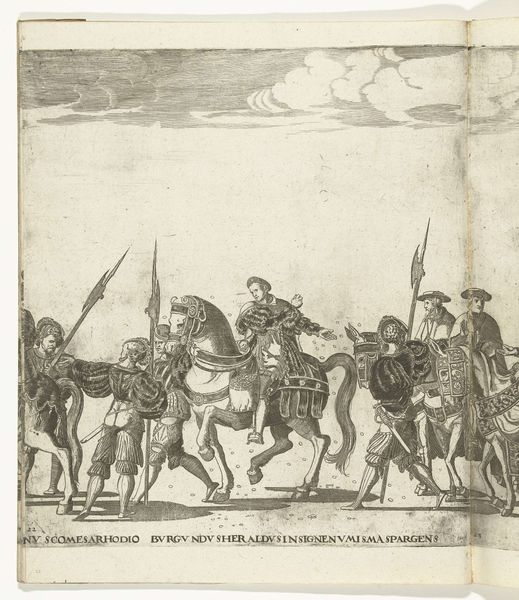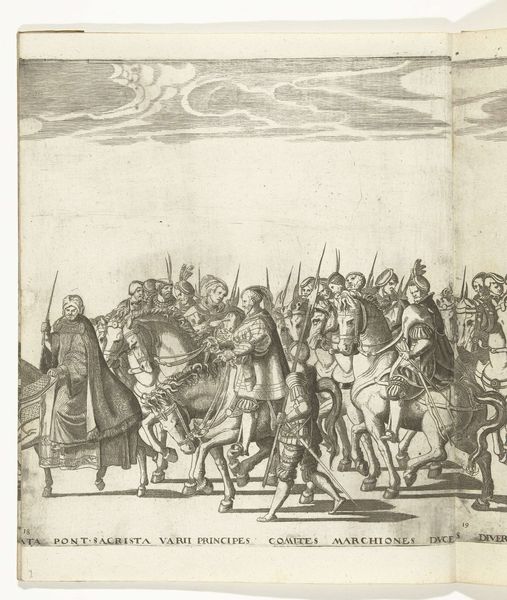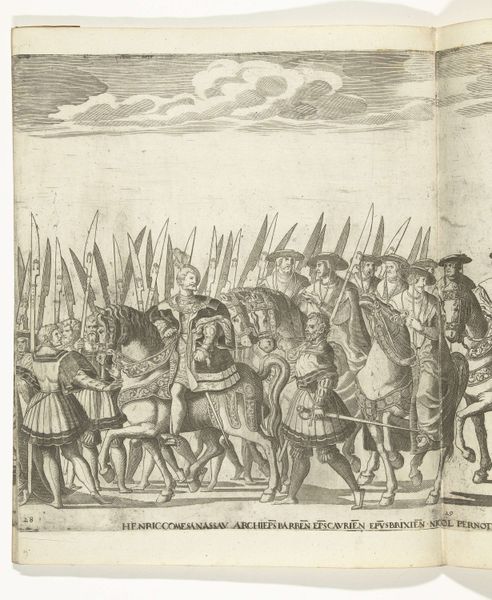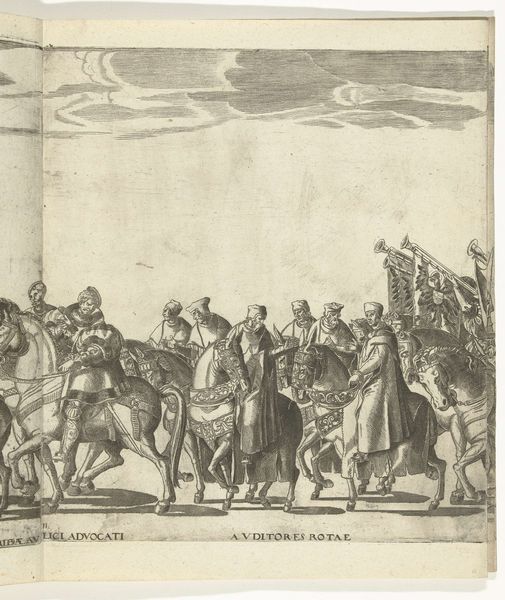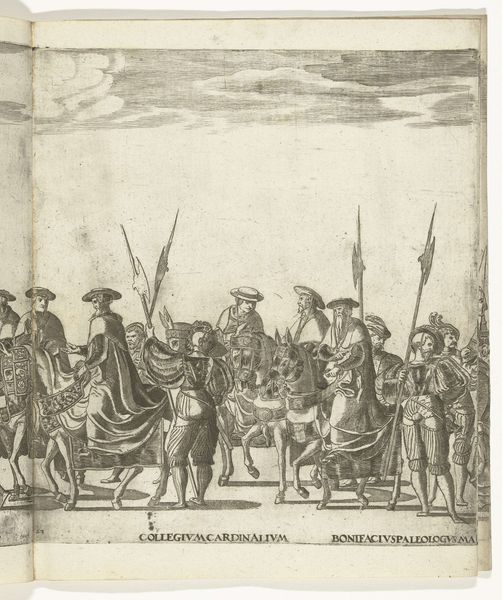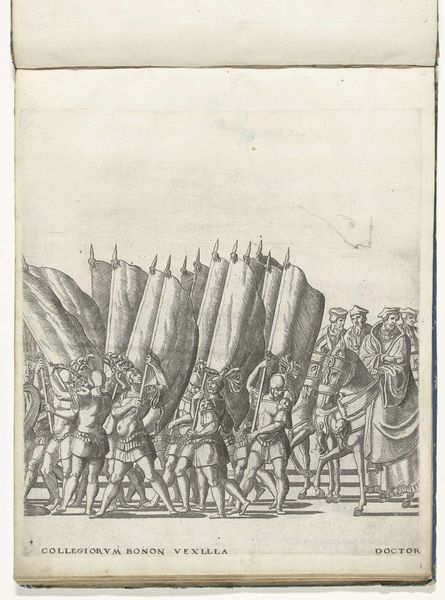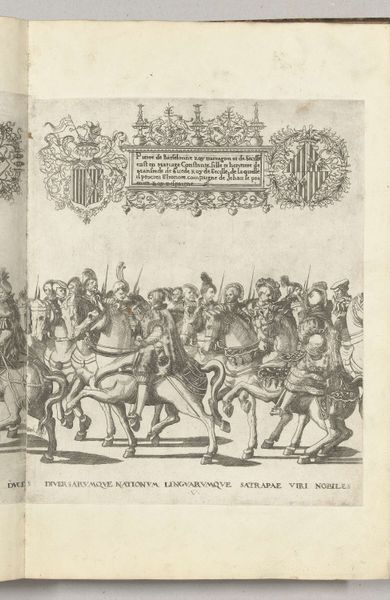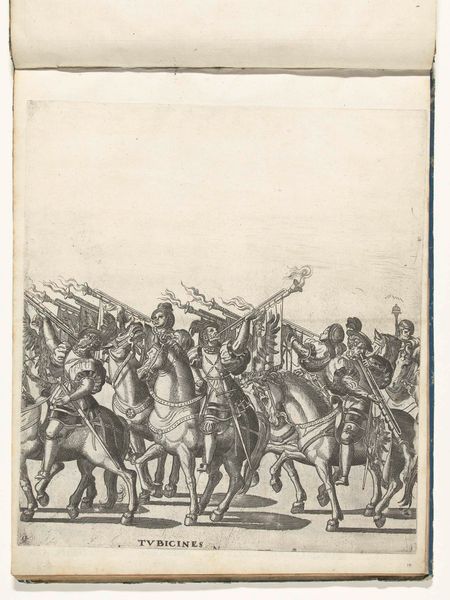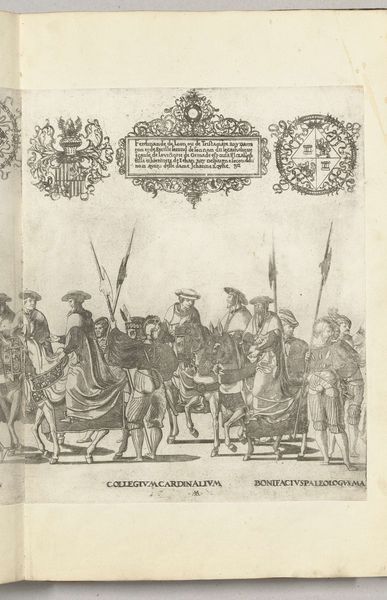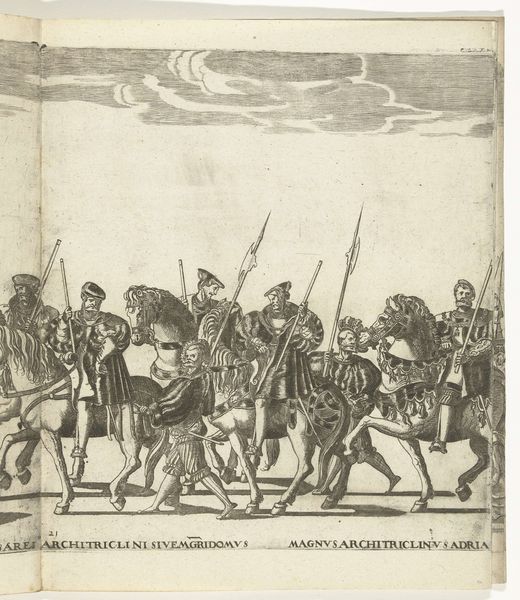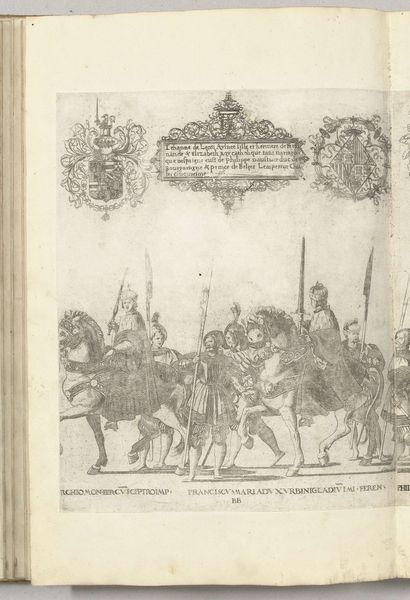
Bonifatius IV Paleologo, markgraaf van Monferrato, met de keizerlijke scepter en Francesco Maria della Rovere, hertog van Urbino, met het keizerlijk zwaard, plaat 24 Possibly 1530 - 1699
0:00
0:00
print, engraving
#
portrait
# print
#
sketch book
#
classical-realism
#
group-portraits
#
history-painting
#
engraving
Dimensions: height 330 mm, width 300 mm
Copyright: Rijks Museum: Open Domain
Curator: This engraving, thought to date sometime between 1530 and 1699, depicts Bonifatius IV Paleologo and Francesco Maria della Rovere with symbols of imperial power. The artist is believed to be Nicolaas Hogenberg. Editor: There's a starkness to it, isn't there? The heavy lines create a very deliberate, almost severe representation of these figures. And the contrast… it's not subtle. What exactly was Hogenberg trying to convey? Curator: Given the historical context, these portraits probably served as tools to reinforce legitimacy. Depicting these men with imperial regalia links them directly to that power, suggesting not just authority but also historical continuation. Look closely at the engraved line, it has the feel of a craftsman dedicated to the creation of imagery intended for reproduction and widespread dissemination. Editor: It’s interesting how the very process of engraving, a medium easily reproduced, becomes part of the power dynamic itself. Mass-produced images to cement a very specific, powerful narrative. Do we know how these were distributed or where they might have been displayed? Curator: Prints like these were often bound in books or circulated independently, ending up in private collections, libraries, or even affixed to walls as declarations of allegiance. Their accessibility ensured that the message – this potent combination of power and heritage – reached a broader audience. What about the paper itself, its materiality? It’s humble, compared to what it depicts. Editor: Right! The contrast between the inexpensive medium and the aristocratic subject. Almost like propaganda distributed to the masses. You wonder about the artisans involved. Were they consciously contributing to a political agenda, or were they merely craftsmen responding to the market? Curator: It's hard to know the individual artisan's intent. But certainly the socio-political circumstances fostered a demand for these sorts of images and this particular engraving process. It highlights the interconnected nature of artistic production with both political will and distribution networks of the time. Editor: This makes me think about the ongoing need for symbolic displays of power and its visual representation throughout history, what remains unchanged over the centuries, and also the transformation through materiality. Curator: Agreed; a look at the socio-historical impact gives further insights to what the artisan making it probably thought of at the time.
Comments
No comments
Be the first to comment and join the conversation on the ultimate creative platform.
